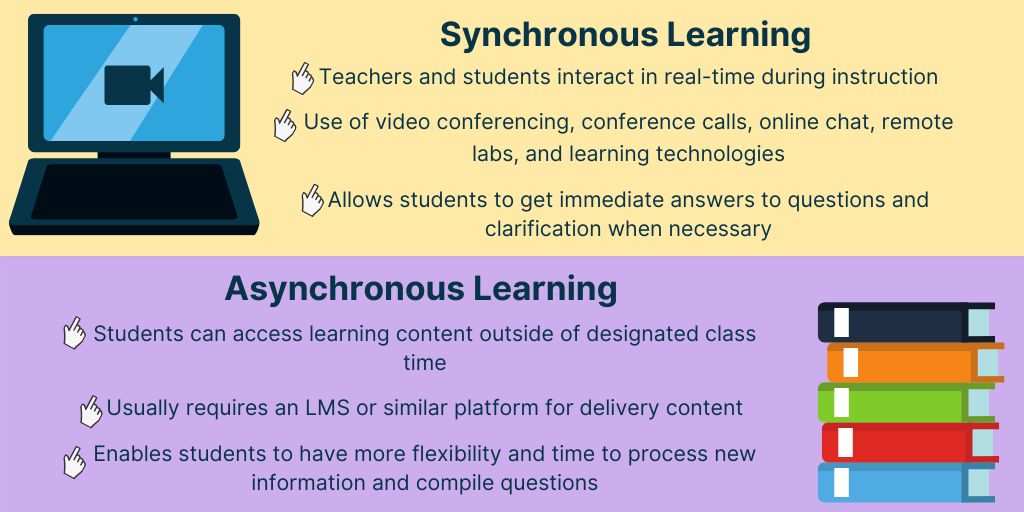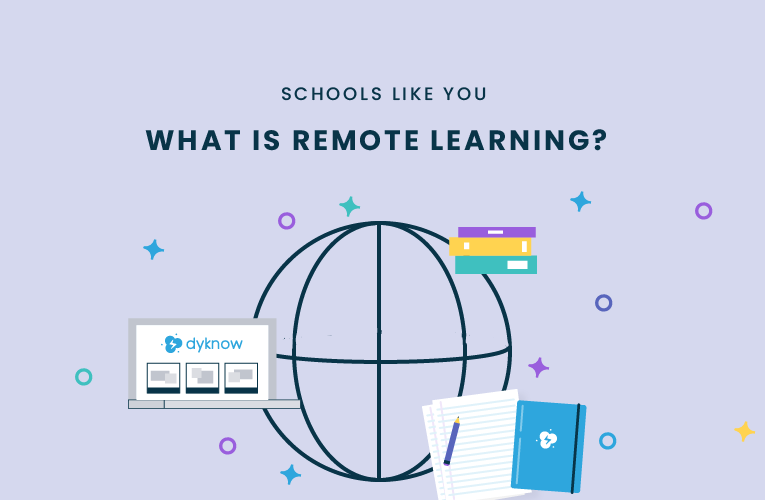Technology is changing the way that teachers interact with students in their classrooms and transforming how K-12 teams collaborate and communicate on a day-to-day basis. But when unexpected events make it impossible to conduct class within school walls, how can K-12 educators leverage technology and instructional strategies to facilitate remote learning?
Before diving deeper into the technology, frameworks, and strategies that make remote learning effective, it’s important to understand what it actually means and how it impacts the K-12 industry.
A Definition for Remote Learning
At the highest level, remote learning (also referred to as e-Learning or distance learning) occurs when teachers and students are separated by distance and/or time, making it impossible to meet in a traditional classroom setting. It compensates for this separation by moving instruction online and enabling teaching to continue amid unexpected events. The use cases for remote learning can range from a few snow days in the Winter, to weeks or months of online instruction due to global events. Regardless, it is critical to have a plan in place so that when events like these occur, teams feel prepared.
Recently, we explained that e-Learning is all about one thing: utilizing learning technologies to maximize lesson plans and curriculum outside of the physical classroom for both teachers and students. Since the terms have become interchangeable, remote learning should serve the same purpose. But as Dr. Sean Coffron, Instructional Technology Training Specialist at Manassas City Public Schools explains, technology should not overshadow instructional goals or the role of teachers.
“Teachers need to remember that they are the most important resource in the classroom, and no computer or piece of technology could ever replace the value of a living and breathing talented educator. This doesn’t change if you are in a virtual classroom without walls.”
– Dr. Sean Coffron
To make remote learning most effective, K-12 educators should aim to combine synchronous and asynchronous learning techniques. This means that classes should be facilitated both in real-time via online communication technologies and learning resources should also be available for students to access outside of virtual class time.

Planning for remote learning can be a daunting task, which is why it is important to make sure you have a community of K-12 educators who are implementing similar initiatives. This ensures that Teachers, Tech Coaches, and Administrators can collaborate with and learn from those like them, rather than attempting to reinvent the wheel.
To make remote learning even more understandable, we put together a SlideDeck to explain what it is, how to be effective when creating a remote learning program, and the best resources to use for remote learning initiatives.
Collaborative Summits
At Dyknow, we are committed to helping K-12 educators create and grow a community for collaboration to be successful with different initiatives and challenges you might come across in your role. This is why we created the Technology Coaching Conference, a series of larger virtual conferences and more specific summits, for educators to learn from each other and collaborate for success.
We are excited to be hosting the Remote Learning Summit on Friday, April 17th from 12:00 – 1:30 p.m. EDT! This Summit will be an opportunity for Tech Coaches and other educators to learn from a panel of Tech Coaches who are leading their schools’ remote initiatives.
Interested in growing your community? Register here.
Learn from a panel of experienced Tech Coaches!
Latest blog articles

Dyknow 2021 Year In Review
In addition to web browser updates and bug fixes, Dyknow released several major product updates, new features and enhancements. Check out Dyknow’s 2021 Year in Review!

The Classroom Management Tool that’s Rated #1 in Satisfaction on G2
K-12 Administrators across the world trust G2 as the #1 platform to find, research, and choose EdTech tools that solve the most pressing problems their teachers are experiencing. In G2's Fall 2021 Reports, Dyknow was once again rated #1 in overall Satisfaction out of...

Bringing Diversity and EdTech to the English Classroom
On this episode of Tackling Tech, Tierra Leustig interviews Scott Bayer about being an anti-racist teacher, diversifying reading lists, creating inclusive learning environments, and leveraging ed-tech in non-technical ELA classrooms. Scott Bayer is a High School...

